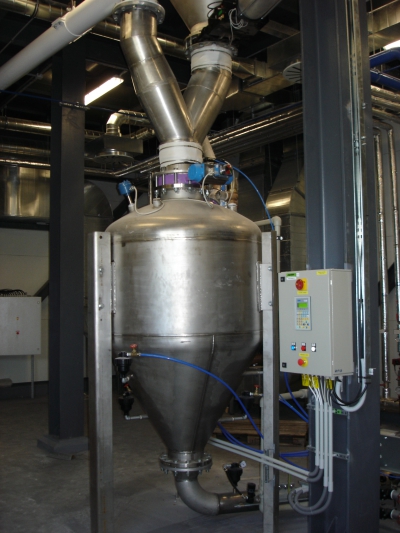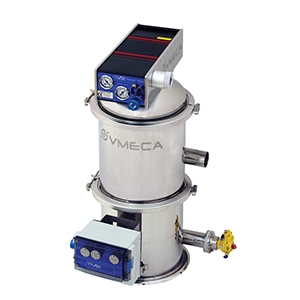Pneumatic conveying
Pneumatic conveying is a closed conveying system designed to transfer bulk materials for dozens ,up to hundreds, of metres with a throughput ranging from single kilos up to dozens of tons an hour.
Pneumatic conveying can be used in almost any industry. Although its use is widespread, individual installations cannot be simply generalised, and it is necessary to seek an optimum type of a pneumatic conveying system for the given conditions with the customer.
Pneumatic conveying of bulk materials can be classified into several categories:
Low-pressure conveying systems where compressed air is provided by fans up to a pressure of 20kPa, and ejectors are usually used as the mixing device. Typical of this type of transport is a large ratio of air to the material and a high speed.
Middle-pressure conveying systems - where blowers from 20 to 100kPa are used as a source of compressed air. Rotary feeders or special ejectors serve as the mixing system. This type of conveying systems is suitable for less abrasive materials where continuous operation is required.
High-pressure conveying systems are run with a pressure from 100 to 800kPa with the use of compressors. Conveying is provided by standardised conveyors with a capacity from 33L up to 4500L. Due to the low ratio of air to the material, the material is conveyed at a low speed. This makes this type of conveying systems considerate of the conveyed material and the transfer pipes. For ""Full line "" high-pressure conveying systems or for hard-to-convey materials, aerators with air flow regulation are mounted on the piping. This equipment helps to optimise the consumption of air and the speed of material in the transfer pipes.
Vacuum conveying systems, where vacuum is created by a vacuum pump, can be designed with a vacuum conveyor or individually based on customers´ requirements. For ""Full line"" high-pressure conveying systems or for hard-to-convey materials, aerators with air flow regulation are mounted on the piping. This equipment helps to optimise the consumption of air and the speed of material in the transfer pipes.
All types of pneumatic conveying systems are designed based on specific customers´ requirements and with regard to the material to be conveyed, economy of the investment, and subsequent operation and maintenance needs.









